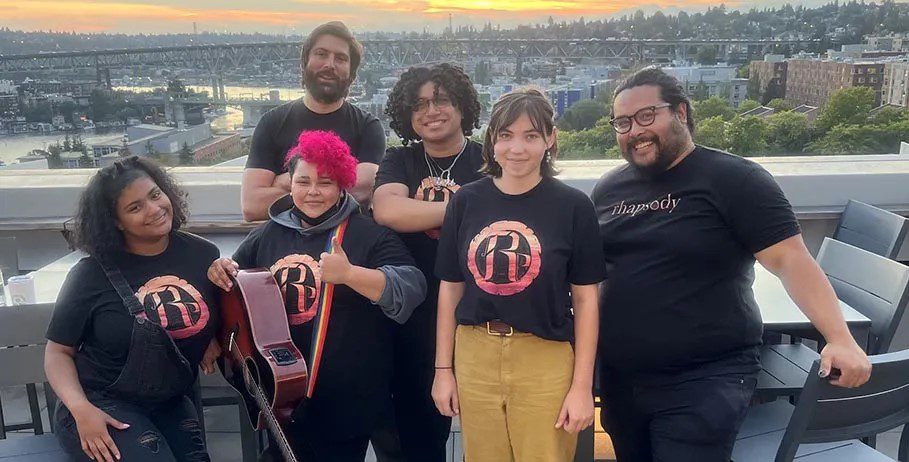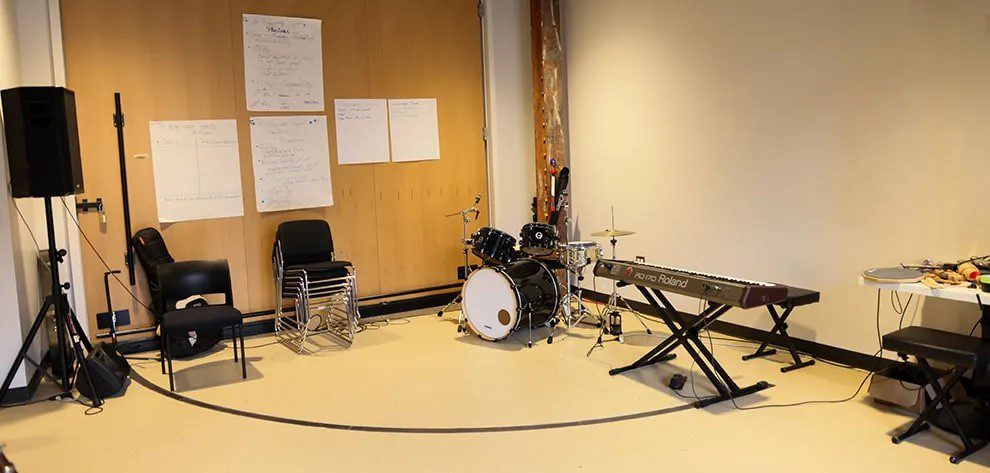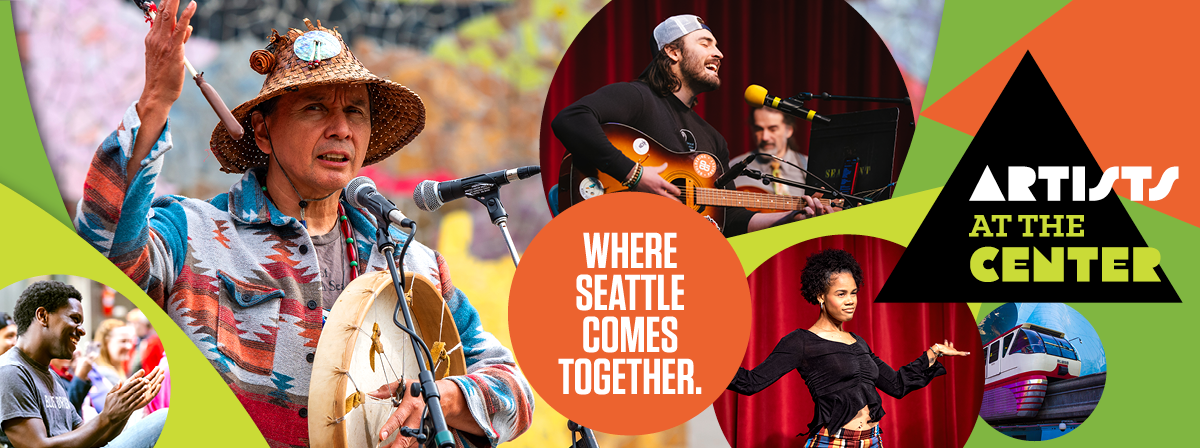
This article was written on special assignment for the Art Beat blog through the TeenTix Press Corps, a teen arts journalism program run by TeenTix, a youth empowerment and arts access nonprofit organization. Read their other Art Beat articles here.
By TeenTix Newsroom Writer Aicha Sinha-Khan
“If there is one reason to attend programs at the Rhapsody Project, it’s their free food,” jokes Enzo Kamada. As a longtime teen participant at Rhapsody as well as a recent addition to the staff, he would certainly know. This is immediately corroborated by Joe Seamons, one of the founders of the organization. He adds with a laugh, “It’s the best part of the thing, all the free snacks.”
Despite what their initial jest may lead you to believe, Rhapsody Project is a music organization that ‘celebrates music and heritage through an anti-racist lens.’ This quote comes directly from their website, where one can also find over 15 different programs catering to different music styles, age groups, and interests, pamphlets that guide the reader through discovering their own musical heritage, as well as an events calendar packed with opportunities, including an upcoming ball.
Though the Rhapsody Project is about to celebrate their 11th anniversary, it wasn’t always this big. Seamons recalls the first program, Junior Fiddlers, that Rhapsody offered at a middle school, where Seamons and Rhapsody co-founder Ben Hunter met its first teen participants like Kamada.
Junior Fiddlers was the only fiddle club at Seattle Public Schools, taught by Hunter and Seamons at the behest of the students’ music teacher. Kamada recalls how the club was different from his prior learnings: “The oral tradition was a really big part of [the program], and it was incredibly different and freeing from the traditional sheet music that we had when I played an instrument like that before.” And from that program, the roots of Rhapsody were established.
Seamons and Hunter decided the Junior Fiddlers needed more performance exposure—they were only scripted to play publicly at the end of the semester—so they brought them to the Hillman City Collaboratory where their professional musician friends played. They united the groups in what Seamons fondly refers to as ‘jam sessions.’ While these sessions originally served the purpose of providing youth musicians with more performing experience, it grew to a program still present today, known as The Unbroken Circle. According to Rhapsody’s website, “Students of any level of experience will learn or deepen foundational musical skills in a relaxed setting.” Participants meet weekly on Mondays, but Rhapsody encourages drop-in visitors as well. The Unbroken Circle is a classic example of one of Rhapsody’s prime goals, to unite musicians of all creed, status, and experience.
The program is also indicative of another core value at the Rhapsody Project, what both Seamons and Kamada refer to as, “a celebration of difference rather than a celebration of sameness.” Both of them also say that this was the core reason that Rhapsody was founded.
“There’s the myth of The Melting Pot, which to me says that people come to America and they get thrown in the pot and their identities, their ethnicities, everything all just melts away and they just join this glorious white mush. And, you know, that sucks,” says Seamons.
Instead, Rhapsody propagates a different message. “…We say what is actually American is not just a melting pot of white mush. It’s a gumbo, and it’s a stew that has a whole bunch of different ingredients and flavors and spices, and they don’t lose all of their own texture and flavor, they retain that but influence, and are influenced by, other flavors.”

Through these stories, a clear picture is painted of how the Rhapsody Project fosters a multigenerational and multi-ethnic music community, as well as serving and educating the youth of today. One can see how these goals influence almost everything at the organization. For example, they have an unorthodox leadership structure that prioritizes larger meetings with all three staff levels present, from founders like Seamons to longtime teen participants like Kamada. This structure purposely rebels against what Seamons refers to as the “typical, European top-down leadership structure.”
These goals also influence the organization in grander capacities, such as them moving into their new headquarters at King Street Station. According to Kamada, “…We can definitely be a lot more consistent now because we have our own definitive home base… [in that past] we did actually have to skip a meet-up or rehearsal because a space wasn’t available.”
Their new location also opens up additional possibilities. Kamada speaks to how Rhapsody has been receiving more people from a college-age demographic, as well as to the benefits of a permanent space for their instrument lending library. Both Kamada and Seamons express excitement at the cultural opportunities their new space offers as well.
“We have so many different Asian cultures that have been here for generations, culture bearers whom we can partner with, so we definitely want to do that.” Kamada says this and the conversation grows to include the goals for Rhapsody’s future. They’ve just opened their first out-of-Seattle chapter, in Virginia. Coupled with their new space, it’s clear that the organization is set for some major changes in the future; especially now that their very first batch of students are thinking about graduation: Kamada is one of them. Already, he’s making plans to study abroad, to further his goals of becoming a teaching artist, an interest he credits to Rhapsody’s teachings.
“I’m not sure… but I think there’s a chance that I might actually go to Japan and study there for college or something… there’s a big Jazz and Blues scene in Japan, and I have this knowledge already, so I just want to continue it wherever I can,” he says.
With these changes to both the staff and organization, both Seamons and Kamada clarify that although extrinsic growth goals are important, Rhapsody’s number one priority is still to serve their community and to continue the cycle of reciprocity between its members and the organization. Specifically, Seamons says the one thing he hopes to see in the future of the organization is more youth participation.
Seamons ended with an invitation and emphasized that there is always room for more young people in their programs: “The Rhapsody Project is open for business.”
Photos from The Rhapsody Project website.



